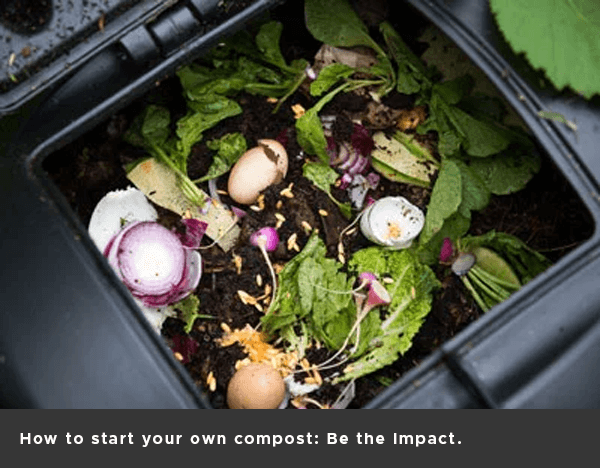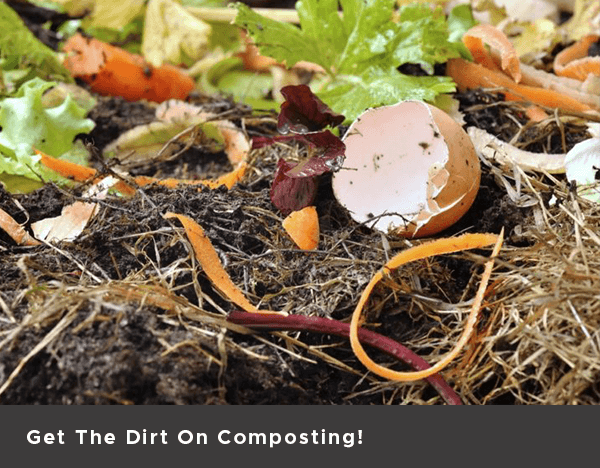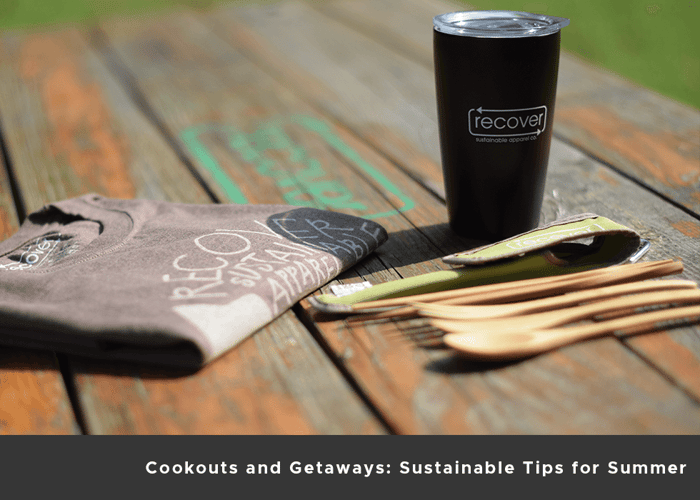
April is a time of year when possibilities become realities. You can feel the days getting longer, and the breeze warmer. Everywhere, you see new beginnings as life literally emerges from the dirt. It makes sense that April is a month with two holidays celebrating this natural inspiration with Earth Day on April 22 and Arbor Day on April 27. Ultimately, Earth Day and Arbor Day offer an opportunity to re-connect and learn more about the systems we live in, and how we can make a positive impact instead of a negative impact on the planet we call home.
So, for Recover’s April Sustainability Tips, here are ten simple and easy actions that you can take today to be part of turning the crucial possibility of sustainability into a reality. Nature certainly shows us that anything is possible.

1) Join the masses that are switching to reusable water bottles and mugs.
Using a reusable water bottle makes too much sense: you save money, you reduce waste, and in many cases, you’re actually drinking better water. In addition to the many water filtration bottle fill-up stations in public buildings, water straight out of the tap in most cities actually has higher and more strict water standards than those of bottled water companies. Plus, scientific research is stacking up about how drinking out of thin plastic bottles is associated with negative health effects. If you haven’t yet, then snag a reusable bottle, bring it everywhere and enjoy the lifestyle improvement of doing good and saving money!
Unlike plastic bottles, paper to-go cups can’t even be recycled easily or at all because there is a thin layer of plastic coating on the inside. A 2016 CNN report estimated that 60 billion paper cups end up in the landfill every year in the US alone- that’s a lot! Then add in a Starbucks estimate that the manufacturing of each of its disposable cups is responsible for 0.24 lbs of CO2 emissions. Just like reusable water bottles, more and more people are putting the pieces together and creating positive impact! Reports state that at Starbucks alone, numbers of reusable mug users are going up by the millions annually.

2) Don't throw away food.
Approximately 40% of the food purchased in the United States ends up in a landfill. Small readjustments in planning and choices can make a big impact in food-related energy consumption and waste. Approximately 10 percent of all U.S. energy use goes into growing, processing, packaging, and shipping food, and this doesn't even account for the energy and other inputs used to produce and transport all of our food imports. Basically, if you enjoy all of the food you buy, you are contributing to much needed energy-use reduction and removing waste from the landfill.

3) Look for 1% For the Planet companies when you shop.
1% For the Planet companies donate at least 1% of their annual sales to environmental causes. The international membership non-profit brings “dollars and doers together to address the most pressing issues facing our planet.” Member companies include Recover, Patagonia, and Grounds For Change Coffee and partner non-profits such as 350.org and Adventure Travel Conservation Fund. The 1% For the Planet organization is making a big impact by providing the capital for environmental non-profits to do work making a positive impact that we all get to enjoy.

4) Plant a tree.
It doesn’t have to be big! People all over the US and the world plant seedlings, and enjoy watching them grow, along with all the other benefits trees provide. The tree should be native to your climate and require appropriate water demand (AKA don’t plant a tree that requires a lot of water if you live in a desert climate). Recover is a partner of the Arbor Day Foundation, check out our Arbor Day partner spotlight and Arbor Day line for inspiration, tees, and socks!

5) Use only LED light bulbs.
If you haven’t already, make the switch! It’s worth it economically and environmentally, as the energy savings is enormous. LEDs use as little as 10 percent of the energy of incandescent bulbs. If every household in the US replaced only one incandescent bulb with an Energy Star-labeled LED, seven billion pounds of carbon pollution would be prevented from entering the atmosphere each year. That’s equivalent to the emissions of approximately 648,000 cars in an entire year. Think of the impact if every light bulb used was LED.

6) Reduce snail mail.
Paper bills are responsible for about 2 million tonnes of carbon pollution each year, not to mention countless trees. No one likes getting bills in the mail anyways, so sign up for online bills, newsletters, and whatever else, wherever possible. Notify companies about unwanted paper snail mail information and catalogs and let them know you’d like to receive notices online or not at all.

7) Re-use EVERYTHING and purchase items that are made to last.
Of all the items purchased within the US, 99% are put in the trash within 6 months. Our planet obviously does not have the resources to continue to produce at such a rate, nor the means or areas of disposing of such vast amounts of trash in our backyards. While well-manufactured, durable goods used to be coveted, many companies now make items to be thrown away so that they will need to be purchased again. Be a conscious consumer, and buy things that are high-quality, made to be re-used and made to last!
8) Start a Compost.
Composting food scraps saves enormous amounts of money and has big impact in terms of reducing greenhouse gas emissions. It’s easy and fun too! Learn more in our quick reads Get The Dirt On Composting! and How to start your own compost: Be the Impact.

9) Stop flushing money down the toilet.
Reducing your toilet’s water capacity is a great way to make an impact in conserving a limited resource and putting a dent in your water bill. If you put a brick, or other weighted, waterproof object such as a tupperware of marbles in the toilet cistern, it will reduce the amount of water needed to fill your tank after a flush. You’ll use less water and save money!

10) Go Local.
A vast majority of our clothes, home furnishings, cars, food, and more come from the other side of the world and this has negative economic, environmental and social implications. For example, eating locally-grown food is enormously impactful in reducing your carbon footprint, plus it’s simply more delicious. The average American meal travels 1,500 miles to get to our plates, and this food is put through unnatural processing to make it stay for this long journey. By purchasing at farmer’s markets and looking for local labels in grocery stores, you are supporting our local communities and reducing carbon emissions. Obviously, buying locally extends beyond food, so support local whenever you can!






